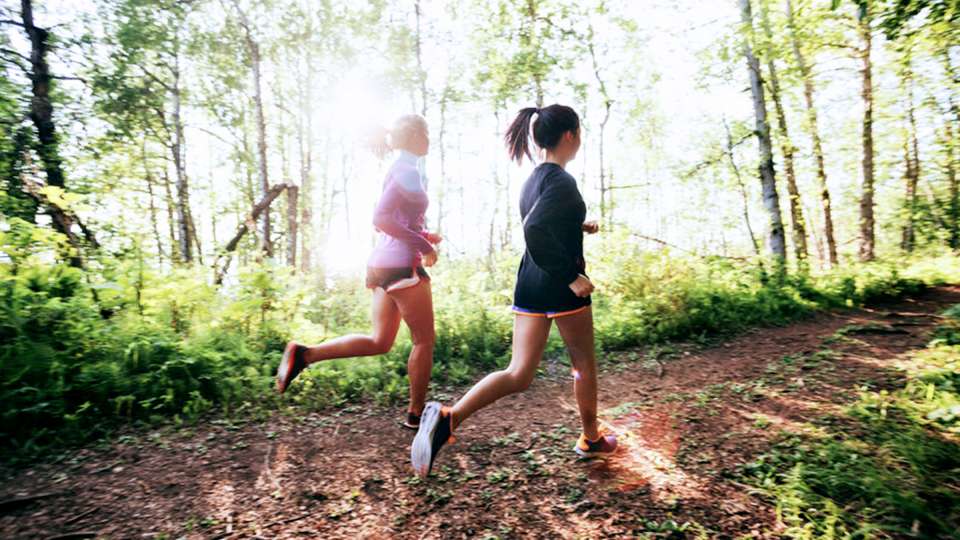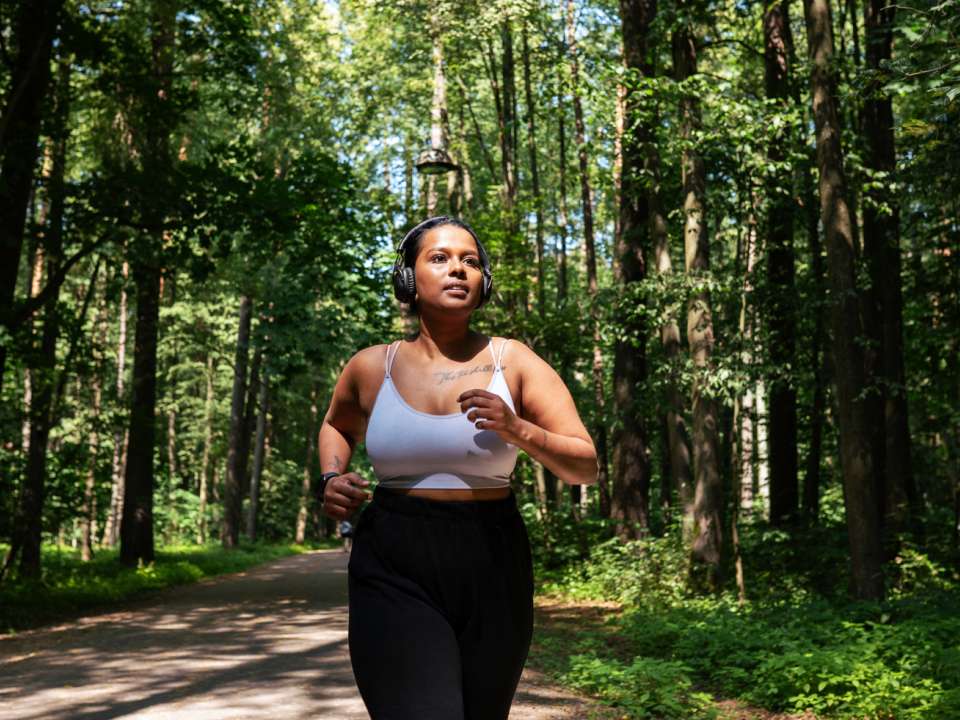
If your regular running routine involves sidestepping sidewalk signs, dodging the occasional car and eyeing a whole lot of pavement, it might be time for a revamp in the great outdoors.
Trail running, when you run on an unpaved surface, has surged in popularity in recent years. And that’s especially true in regions like the Pacific Northwest, where we have mountain trails and forested pathways galore.
But if the idea of huffing it straight up a cliff seems more than a little intimidating to you, don’t stress. Trail running isn’t all hardcore elevation gain and rocky terrain — it has a beginner-friendly side, too.
A jog through Seward Park? That’s trail running. A loop on the dirt track around Green Lake? That counts, too.
“That’s part of the appeal to it,” explains Brenda McKenzie, a physical therapist at Hall Health Center on the University of Washington campus. “There’s such a big span on the definition of trail running. It can go from flat, packed-dirt trails to rocky, high-elevation terrain and that opens the door to so many different avenues of running.”
How trail running compares to road running
Along with the mental health boost you get from being out in nature, trail running enthusiasts love the sport for a variety of reasons, from the welcoming community to the variety of scenic routes.
For McKenzie, an experienced athlete who participates in triathlons and Ironman competitions, it was all about giving her body a break.
“I added in trail running with my training partner, and it was gentler on my joints and allowed me to run farther and longer with fewer aches than I could on the road,” she explains.
While the data is mixed about whether hard surfaces cause more running injuries than unpaved ones, in the end, it’s all about what feels right to you. If your hips and knees find asphalt too jarring, a switch to dirt might be worth a try.
That said, just because you opt for a dirt path instead of a paved one doesn’t mean you’ll be able to avoid injury altogether.
“On the trail, you have different things like rocks, roots, downed tree branches and various obstacles you have to manage,” McKenzie notes. “Surfaces are uneven so, from a physical therapy perspective, you have to have good ankle stability before you try trail running.”
Another major difference between road running and trail running is how you evaluate your progress. On the road or treadmill, it’s usually about maintaining a certain pace or running a specific distance. But when you’re out on the trail, there’s no way to sustain a steady gait.
“Your gait is more sporadic because you’re trying to maneuver around different things,” McKenzie says. “And your pace is going to be slower uphill than it will be downhill. When you’re going downhill, you might have to shorten and widen your stride to maintain your balance. You just don’t get the same kind of consistent pace with trail running as you do with road running.”
Walking is also much more common — expected even — in trail running, she adds, especially when the trail is too steep or the terrain is too unstable to run on. Even elite-level trail runners walk during races, so don’t feel like you’ll be looked down upon if you can’t run the entire route.
And while you get to avoid dodging pedestrians and sidewalk obstacles when you’re out on a trail, you do still need to observe basic hiking etiquette. Slower runners should step to the side to let faster ones pass, and anyone going downhill should cede way to those headed up.
Find the right trail running gear
Now that you know what to expect, it’s time to gear up.
The first — and most important — piece of equipment you need is a pair of comfortable shoes. Emphasis on the comfortable part.
“Comfort is number one because if you don’t have comfortable shoes when you’re going downhill, you’ll have so many black toenails and blisters,” McKenzie explains. “Each foot is different and each body size is different, so the best shoe really depends on the person. Find one that feels good on your foot, provides some support and offers enough traction.”
Weather-appropriate clothing is also a must. Unlike road running, where conditions probably won’t vary drastically during your route, it’s not unusual for trail runners to experience sunshine at the trailhead, a rain shower mid-run and snowy conditions at the summit.
If you’re mostly sticking to lowland trails near city centers, then a quick check of the weather report and your usual running clothes will likely suffice. But if you plan to head for higher elevations, you may need to pack extra apparel like a light windbreaker, hat and gloves as well as additional gear like running crampons or a headlamp.
And, as with all types of running, staying hydrated when out on the trail is essential. Your options here range from hydration vests to belts to handheld water bottles. Head to a local outdoor outfitter to test what feels natural to carry when you run. For long runs out in remote areas, you’ll just want to make sure you drink about 4 to 8 ounces every 15 minutes or so.
You may also need to consider safety gear, like a tracking device or first-aid kit, especially if you’re planning to run on a less-populated trail or in an isolated area.
“It’s a good idea to follow a hiking mentality,” McKenzie says. “If you’re going to be out where the area isn’t well marked or very remote, you may need to think about safety gear. If you’re on well-marked, standard trails or ones that are pretty popular, you may not need all that.”
Basically, if your first foray into trail running is at an urban park, you probably don’t need to invest in a fancy GPS tracker. But if you’re headed somewhere further afield, it might be worth considering.
Join the local trail running community
If the thought of taking on a trail solo still seems a bit daunting, try to find a local running group to join instead. Many running organizations in the area coordinate group runs and even races.
“Local running stores will have events, get-togethers or groups going out to Cougar Mountain and Tiger Mountain,” McKenzie says. “That’s a nice way to start doing things with a bit of a safety net.”
The trail running community is also very welcoming to newcomers, she adds. Like road running, trail running has its share of hardcore folks, but for the most part, people are eager to invite in beginners and share tips.
“People just have your back a little bit more and are more welcoming,” McKenzie notes. “You’re out in the middle of nowhere, and everyone is just out there loving nature.”
Research trails and conditions ahead of time
Once you’re geared up and ready to go, it’s time to pick a trail.
Websites like the one from local nonprofit Washington Trails Association offer detailed descriptions for all types of trails across the state. You can see how many miles a trail is, the elevation gain and directions to the trailhead.
Some sites also provide recent trip reports from hikers, so you can see if a trail already has snow on it or if a recent windstorm resulted in any downed trees. This can help you determine what clothing you might need and what gear to pack.
Some of McKenzie’s personal recommendations for trail running beginners include Saint Edward State Park in Kenmore and Discovery Park and the Washington Park Arboretum in Seattle.
Whatever trail you land on, though, she simply encourages you to start.
“Go find a beautiful spot and try it,” she says. “Start easy with a nice hike that you’ve done before and then run around some of the urban and state parks we have. When I’m out trail running, I just feel like a kid again. It’s just so fun.”

 Healthy ideas for your inbox
Healthy ideas for your inbox





